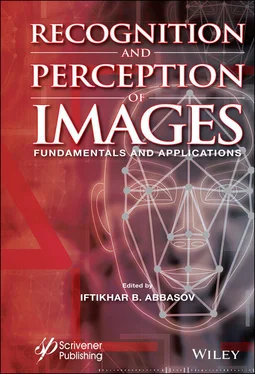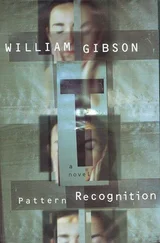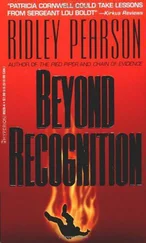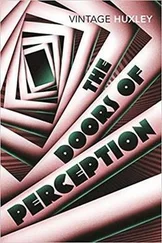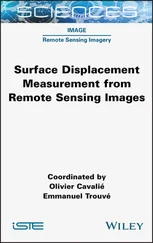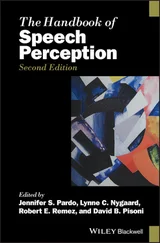1 Cover
2 Title Page
3 Copyright
4 Abstract
5 Preface
6 1 Perception of Images. Modern Trends 1.1 Visual System 1.2 Eye. Types of Eye Movement 1.3 Perception of Figures and Background 1.4 Space Perception 1.5 Visual Illusions 1.6 Conclusion References
7 2 Image Recognition Based on Compositional Schemes 2.1 Artistic Image 2.2 Classification of Features 2.3 Compositional Analysis of an Art Work 2.4 Classification by Shape, Position, Color 2.5 Classification According to the Content of the Scenes 2.6 Compositional Analysis in Iconography 2.7 Associative Mechanism of Analysis 2.8 Conclusions References
8 3 Sensory and Project Images in the Design Practice 3.1 Sensory Image Nature 3.2 Language and Images Symbolics 3.3 Methods of Images Production in Ideas 3.4 Personality Image Projecting 3.5 Project Image 3.6 Conclusion References
9 4 Associative Perception of Conceptual Models of Exhibition Spaces 4.1 Associative Modeling of the Exhibition Space Environment 4.2 Associative Modeling of Environmental Objects in Exhibition Spaces 4.3 Conclusion References
10 5 Disentanglement For Discriminative Visual Recognition 5.1 Introduction 5.2 Problem Statement. Deep Metric Learning Based Disentanglement for FER 5.3 Adversarial Training Based Disentanglement 5.4 Methodology. Deep Metric Learning Based Disentanglement for FER 5.5 Adversarial Training Based Disentanglement 5.6 Experiments and Analysis 5.7 Discussion 5.8 Conclusion References
11 6 Development of the Toolkit to Process the Internet Memes Meant for the Modeling, Analysis, Monitoring and Management of Social Processes 6.1 Introduction 6.2 Modeling of Internet Memes Distribution 6.3 Intellectualization of System for Processing the Internet Meme Data Flow 6.4 Implementation of Intellectual System for Recognition of Internet Meme Data Flow 6.5 Conclusion References
12 7 The Use of the Mathematical Apparatus of Spatial Granulation in The Problems of Perception and Image Recognition 7.1 Introduction 7.2 The Image Processing and Analysis Base Conceptions 7.3 Human Visual Perception Modeling 7.4 Mathematic Modeling of Different Kinds of Digital Images 7.5 Zadeh’s Information Granulation Theory 7.6 Fundamentals of Spatial Granulation 7.7 Entropy-Preserved Granulation of Spatial Data 7.8 Digital Images Granulation Algorithms 7.9 Spatial Granulation Technique Applications 7.10 Conclusions References
13 8 Inverse Synthetic Aperture Radars: Geometry, Signal Models and Image Reconstruction Methods 8.1 Introduction 8.2 ISAR Geometry and Coordinate Transformations 8.3 2-D ISAR Signal Models and Reconstruction Algorithms 8.4 3-D ISAR Signal Models and Image Reconstruction Algorithms 8.5 Conclusions Acknowledgment References
14 9 Remote Sensing Imagery Spatial Resolution Enhancement 9.1 Introduction 9.2 Multiband Aerospace Imagery Informativeness 9.3 Equivalent Spatial Resolution of Multiband Aerospace Imagery 9.4 Multispectral Imagery Resolution Enhancement Based on Spectral Signatures’ Identification 9.5 Multispectral Imagery Resolution Enhancement Using Subpixels Values Reallocation According to Land Cover Classes’ Topology 9.6 Remote Sensing Longwave Infrared Data Spatial Resolution Enhancement 9.7 Issues of Objective Evaluation of Remote Sensing Imagery Actual Spatial Resolution 9.8 Conclusion References
15 10 The Theoretical and Technological Peculiarities of Aerospace Imagery Processing and Interpretation By Means of Artificial Neural Networks 10.1 Introduction 10.2 Peculiarities of Aerospace Imagery, Ways of its Digital Representation and Tasks Solved on It 10.3 Aerospace Imagery Preprocessing 10.4 Interpretation of Aerospace Imagery by Means of Artificial Neural Networks 10.5 Conclusion References
16 Index
17 End User License Agreement
1 Cover
2 Table of Contents
3 Title page
4 Copyright
5 Abstract
6 Preface
7 Begin Reading
8 Index
9 End User License Agreement
1 Chapter 1 Figure 1.1.1 “Grey on orange”, “Flower”, “Drawing drawing” [Pepperell, 2019]. Figure 1.1.2 Example of three groups of stimuli tested in study (Original, colum... Figure 1.1.3 Examples of interactive realization of basic test models: (a) Wundt... Figure 1.1.4 Structure of the compound eye of a fly. Figure 1.1.5 Vertical section of the human eye. Figure 1.1.6 “Cage without bird”, the scheme for the detection of “blind spots”. Figure 1.1.7 Projection zones of the left hemisphere of the brain. Figure 1.2.1 Human oculomotor muscles. Figure 1.2.2 Determination of the sharpness of the resolution of the eye. Figure 1.2.3 Snellen table and Landolt rings. Figure 1.2.4 The stylized Landolt rings without the noise and with different noi... Figure 1.2.5 Comparison of methods for determination of regions of interest and ... Figure 1.2.6 Examples of oculograms of different test subjects who perceive the ... Figure 1.2.7 Transition row of face images from which the goal stimulus pairs ar... Figure 1.2.8 Schemes of eye movement when viewing various images [Yarbus, 1967]. Figure 1.2.9 A reproduction of the painting “Didn’t Wait” by Russian artist I. R... Figure 1.2.10 Text without spaces between words. Figure 1.2.11 F-Pattern navigation. Figure 1.2.12 Comparison of certainty value of web page and saccadic estimation,... Figure 1.2.13 Tilt action. Figure 1.2.14 Curvature after-effect. Figure 1.2.15 Brightness assimilation [Ghosh, Bhaumik, 2010]. Figure 1.2.18 Mach bands. Figure 1.2.17 Spatial frequency. Figure 1.2.18 Hermann’s grid. Figure 1.2.19 “Complementary” grid of Hermann. Figure 1.2.20 Light contrast. Figure 1.2.21 Texture pattern of various letters. Figure 1.2.22 Test images for determining color blindness. Figure 1.2.23 Achromatic pattern that causes subjective color sensations. Figure 1.2.24 Illustration based on dark shades of red and green and color illus... Figure 1.3.1 The combination of “figure-background”. Figure 1.3.2 Dual perception of background – figure combination. Figure 1.3.3 Chaotic pattern. Figure 1.3.4 Gestalt perception of the figure. Figure 1.3.5 Pattern based on clear patterns. Figure 1.3.6 Proximity factor grouping. Figure 1.3.7 Similarity factor grouping. Figure 1.3.8 Grouping on the principle of the same type of communication. Figure 1.3.9 Grouping factor “good continuation”. Figure 1.3.10 “Wedge” migratory birds, the factor of “common destiny”. Figure 1.3.11 Grouping by symmetry factor. Figure 1.3.12 Grouping factor closure. Figure 1.3.13 “Cats and dogs”, the factors of “good continuation” and closure. Figure 1.3.14 Triangle and circle configuration. Figure 1.3.15 Subjective contours. Figure 1.3.16 Necker’s subjective cube. Figure 1.3.17 Strengthening the subjective contour overlapping elements. Figure 1.3.18 The weakening of the subjective central rectangular contour. Figure 1.3.19 Three-dimensional subjective contours. Figure 1.3.20 Perception of forms depending on orientation. Figure 1.3.21 Perception of ambiguous forms. Figure 1.3.22 Recognition of the profile on the background and as a contour. Figure 1.3.23 The task for the Stroop effect. Figure 1.4.1 Flat and three-dimensional interposition of one scene. Figure 1.4.2 Linear perspective. Figure 1.5.1 Sequenced frames of illusion of ‘Hollow mask’ [Website youtube.com,... Figure 1.5.2 Constancy perception of size. Figure 1.5.3 Illusion of the Moon. Figure 1.5.4 The illusion of Muller-Lyer. Figure 1.5.5 Illusion Ponzo. Figure 1.5.6 Illusion of Poggendorf and Zolner. Figure 1.5.7 Horizontal Vertical Wundt Illusion. Figure 1.5.8 Illusion of Ebbingauz and Yastrov’s. Figure 1.5.9 Influence of context on apparent length, Baldwin’s illusion. Figure 1.5.10 Illusions based on contrast tilt. Figure 1.5.11 Fraser’s Illusion. Figure 1.5.12 Illusion of Münsterberg. Figure 1.5.13 Zander parallelogram, AB and AC are equal.
Читать дальше
